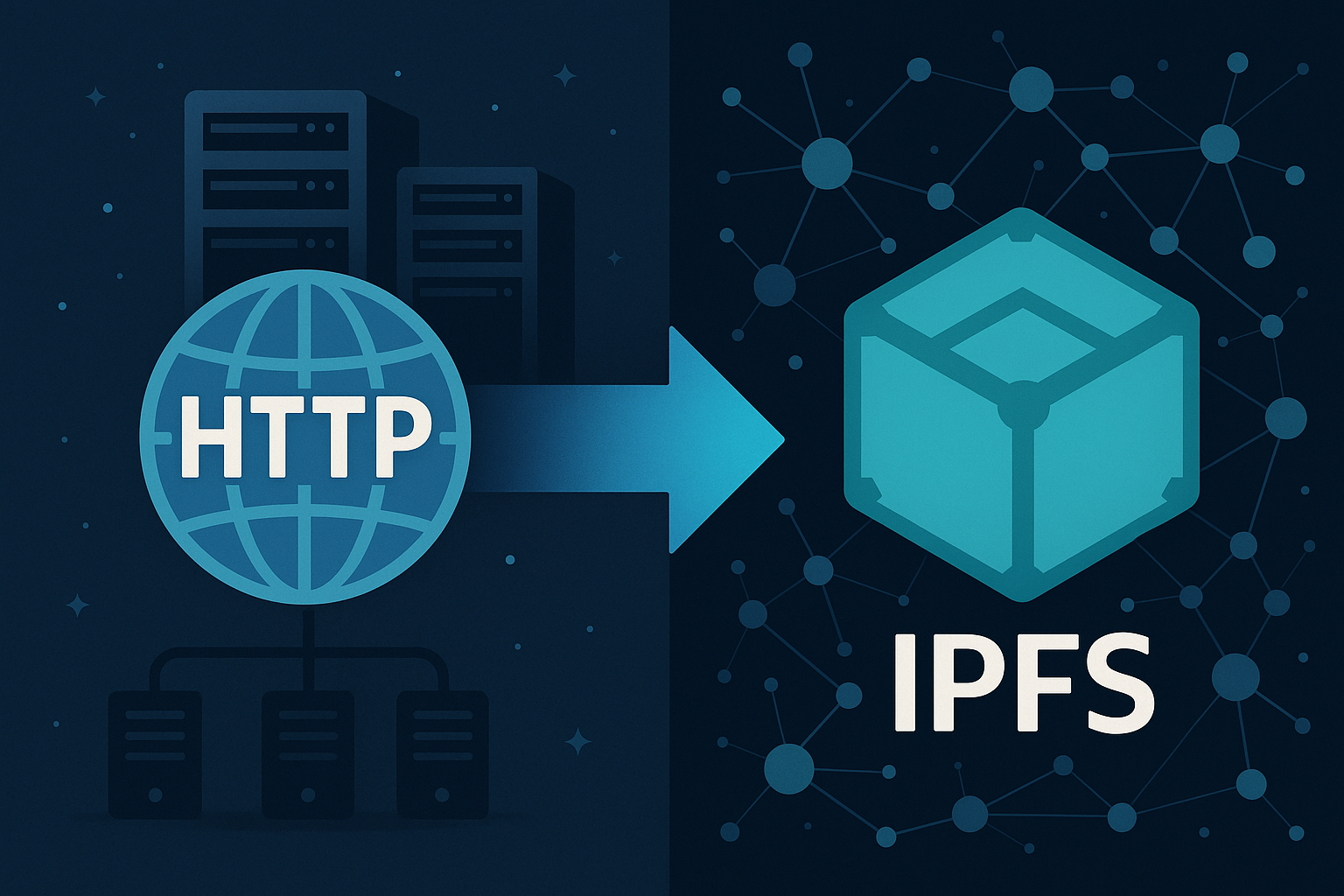Beyond HTTP: An Intro to the Distributed Web with IPFS
IPFS offers a distributed, content-addressed web, unlike HTTP's fragile location-based model. This makes content permanent, censorship-resistant, and efficient.

For decades, our experience of the internet has been shaped by a quiet workhorse: the Hypertext Transfer Protocol, or HTTP. It's the foundation of the web as we know it, fetching websites, images, and videos from specific servers to your browser. You see it every day in URLs starting with http:// or https://. This model is simple: you ask a specific computer (a server) for a file, and it sends it to you.
But what if that server goes down? What if the content is moved, or worse, censored and deleted? The result is the all-too-familiar "404 Not Found" error. The traditional web is built on a fragile, centralized system.
Enter the InterPlanetary File System (IPFS), a bold project that reimagines how we store and share files online. It's not a replacement for the internet, but a new protocol designed to make the web more resilient, permanent, and open.
Shifting from Location to Content
The core magic of IPFS lies in a fundamental shift in how we find things. HTTP uses location addressing. You tell your browser where to find a file (e.g., https://example.com/images/cat.jpg). The content is tied to its location on a specific server.
IPFS, on the other hand, uses content addressing. Instead of asking "Where is this file?", you ask "What is this file?". Every file added to the IPFS network is given a unique cryptographic hash known as a Content Identifier (CID). This CID is like a digital fingerprint, derived directly from the content of the file itself. If even a single pixel in an image changes, the CID for that new version will be completely different.
When you want a file on IPFS, you request it by its CID. The network then finds the nodes (other computers running IPFS) that are storing that specific piece of content and delivers it to you. It doesn't matter where the file is, only that it exists on the network.
Why is This a Game-Changer?
This simple change from location to content has profound implications:
- Permanence and No More 404s: As long as at least one node on the IPFS network is hosting a file, it will be accessible to anyone who requests it by its CID. Content can't disappear just because the original server went offline.
- Censorship Resistance: Because files are distributed across many computers, there is no single point of failure or control. It's incredibly difficult for any single entity to block or delete content that is being shared by multiple peers.
- Efficiency and Speed: When you request a popular file, IPFS can pull different pieces of it from multiple nearby peers simultaneously, much like BitTorrent. This can be significantly faster than downloading from a single, potentially distant server.
- Built-in Versioning: The cryptographic nature of CIDs means you can be certain you have the exact file you requested, with no tampering. It also creates an implicit version history; new versions of a file get new CIDs, but the old ones remain accessible.
The Future is Distributed
IPFS is more than just a file-sharing system; it's a foundational layer for a new, decentralized web. It powers everything from censorship-resistant blogging platforms and social media to new forms of data storage and collaborative applications.
While it's still a developing technology, IPFS offers a compelling vision for a more robust, equitable, and user-controlled internet. It challenges the concentration of power in the hands of a few large companies and returns control over data to the users themselves. The next time you see a broken link, remember: there's a different way to build the web, and it's happening right now on IPFS.
